I mentioned, like, a week ago having a bunch of photos from the NC Botanical Garden, but it was too soon then to post them – they needed time to come to their full potential, mellow and full-bodied.
[Do you like how I can sell being a slack-ass by making it sound like wines or something? And what does “full-bodied” taste like anyway? I doubt they mean fatty. Even “mellow” is pretty questionable – that’s a mood, you pompous gobwits, not a flavor (or even flavour.) All wines are supposed to be associated with mellow. Just once, I want to find one that’s anxious, with overtones of insecurity…]

Compared to some visits, this one was a little slow – I didn’t spot one Carolina anole, and even the insect species were a bit sparse. The pitcher plants showed the first real activity, among the finds there being this massive eastern cicada-killer wasp (Sphecius speciosus.) Not quite the size of my little finger, it easily outmassed any other Hymenoptera that I’ve seen, and while I have no idea what the venom is actually like, it’s easy to believe getting stung by this would hurt.
There were no cicadas to be seen in the pitcher plants, though I doubt that was what it was after – the cicadas are to feed to their larvae anyway. The nectar that the plant uses to attract and drown insects remained out of reach, and the wasp wasn’t committing, so it flitted from one blossom to another, not to my knowledge accomplishing anything, but who knows what I was missing? There was another species that was taking advantage of this attraction, though.
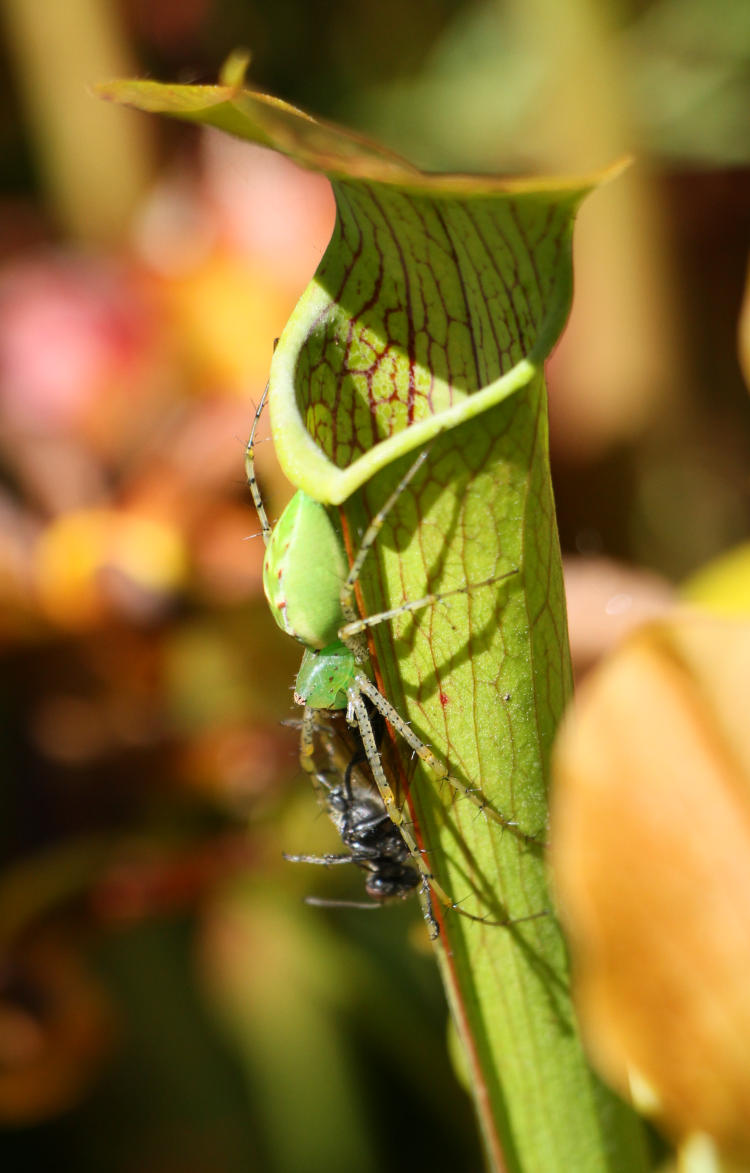
I’d just passed through a region of the garden that had typically been home to green lynx spiders (Peucetia viridans) in the past, and spotted not one, nor any sign of webbing or egg sacs, but I found several hanging out on the pitcher plants, including this one already in possession of a meal. Green lynxes are ambush predators, relying on their coloration to escape attention and then snagging their prey when it comes close, and they’re quite capable of taking something far larger than they are. One, probably 1/3 the mass of the cicada-killer at top, nevertheless took a shot at it as it came close; I wasn’t even aware of its presence until I heard the wasp flit away from it with a noticeable buzz. Meanwhile, this lynx is getting a bit large in the abdomen and may not be long before creating an egg sac.
But we need a better illustration.

This patch of unidentified older flowers was in the same planter as the aforeseen pitcher plants, very open, and you can see how well the lynx spider blends in – it’s right there, but I’m comfortable saying that most of the visitors to the garden missed it.
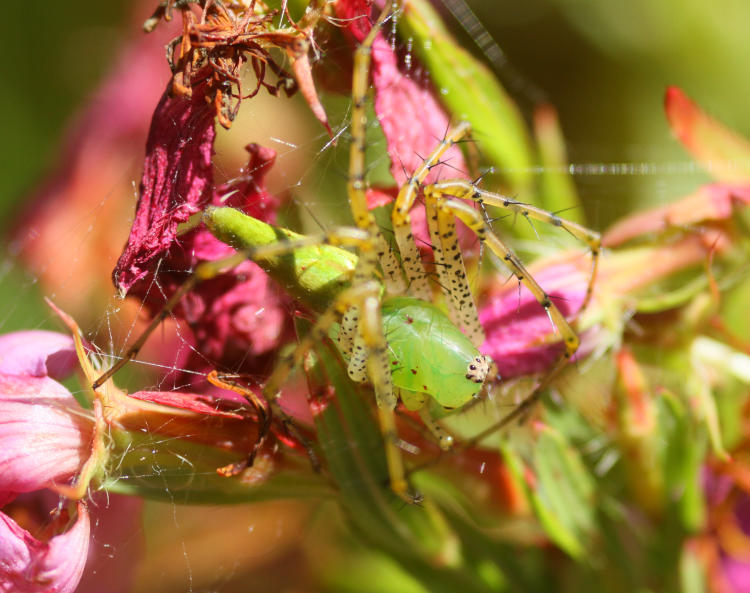
It didn’t really occur to me at the time, and I didn’t notice the collection of webbing until editing, but the abdomen is suspiciously thin here and the webs a hint, since they don’t use them for hunting: there’s probably an egg sac out of sight beneath the leaves. Mother will hang out near the sac until the young hatch, and run interference for a while to protect them.
A short distance away, another find was resting in the shade of a large leaf.
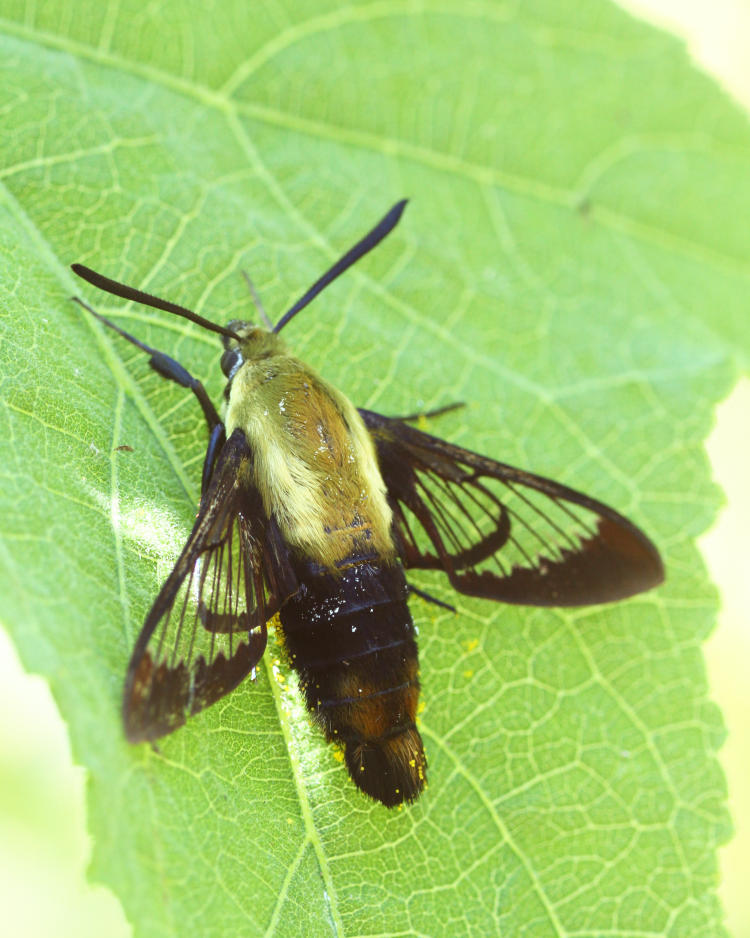
This is a snowberry clearwing (Hemaris diffinis,) one of two hummingbird mimic moths in the area, though they also can appear like bumblebees. It’s easy to believe that this protects them from predators and it almost certainly works (otherwise it would never have evolved,) but the spiders aren’t fooled – I’m guessing birds are. Just a little later on, I debated about passing up a particular section of the garden, but then decided to check it out for just a few minutes, which turned out well.
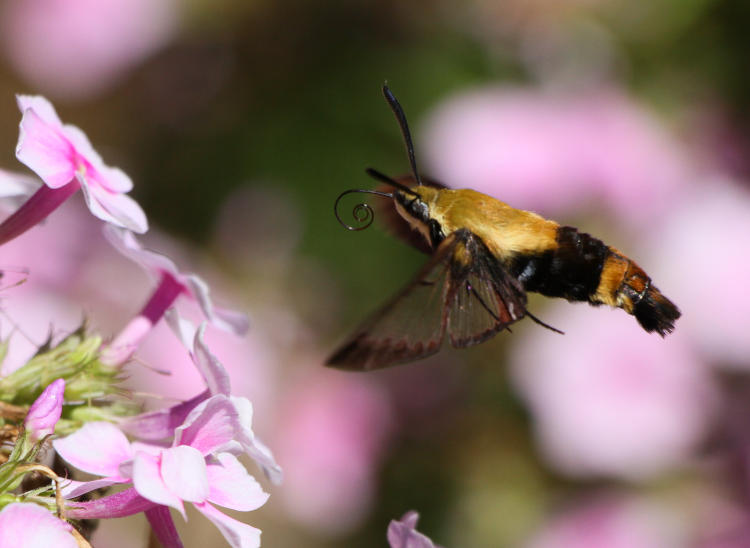
Another clearwing was making the rounds of a patch of phlox, and I blew quite a few frames in pursuit. This proved challenging, because the hyperactive nature of the moth was defying the autofocus quite often, but attempting to manually focus was much worse, so I have a lot of frames to discard, with enough keepers to make it worthwhile.
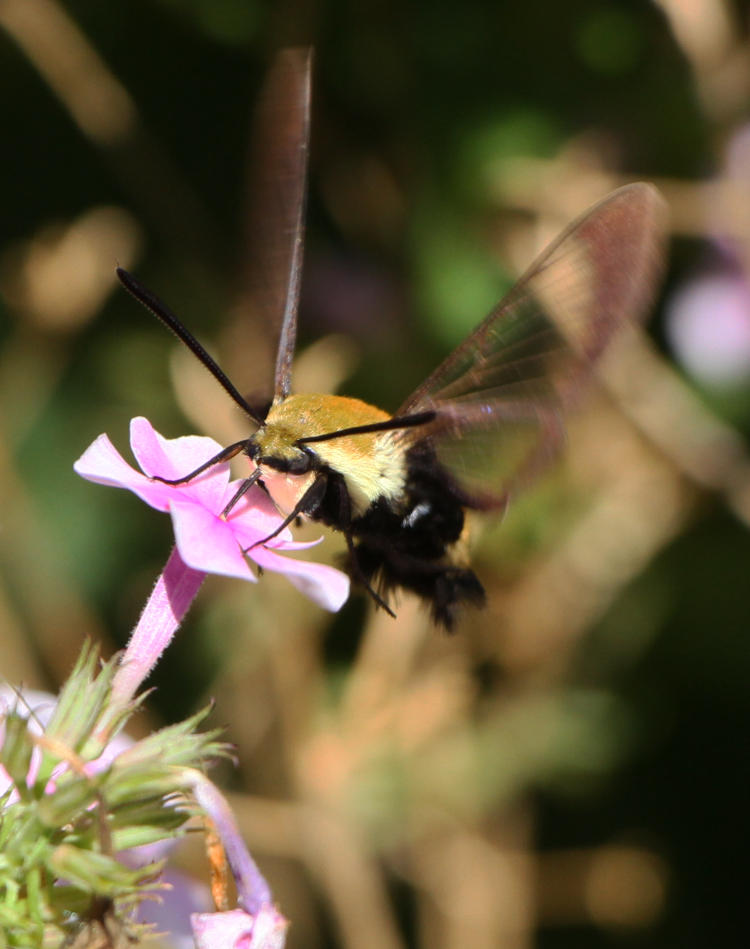
Time spent ‘on station,’ paused at a particular blossom, might have ranged as high as two seconds, but typically it was a second or less – I guess phlox doesn’t produce a lot of nectar. And like many insect species, clearwings don’t seem to follow any pattern, so anticipating their movements is hit-or-miss, and prefocusing on a specific spot largely a waste of time. You just track them as best as you can.
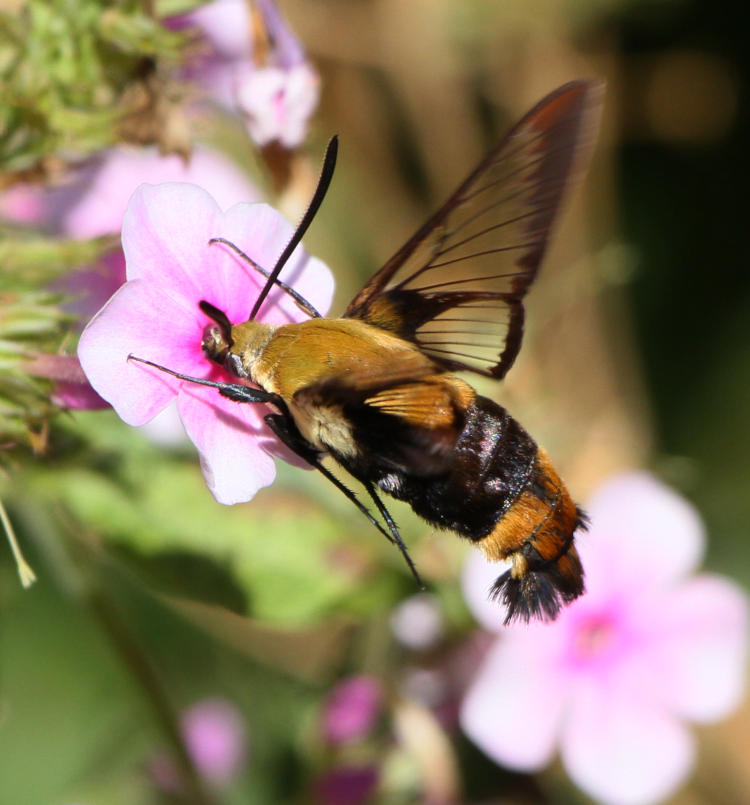
Given the deep, narrow trumpet of the phlox, though, only insects with a long proboscis (butterflies and moths) can get the nectar anyway, apparently pollinating the flowers with their face, as it were. I imagine some really tiny insects could crawl down in there, but due to body size couldn’t make much of a dent on the nectar before they were full.
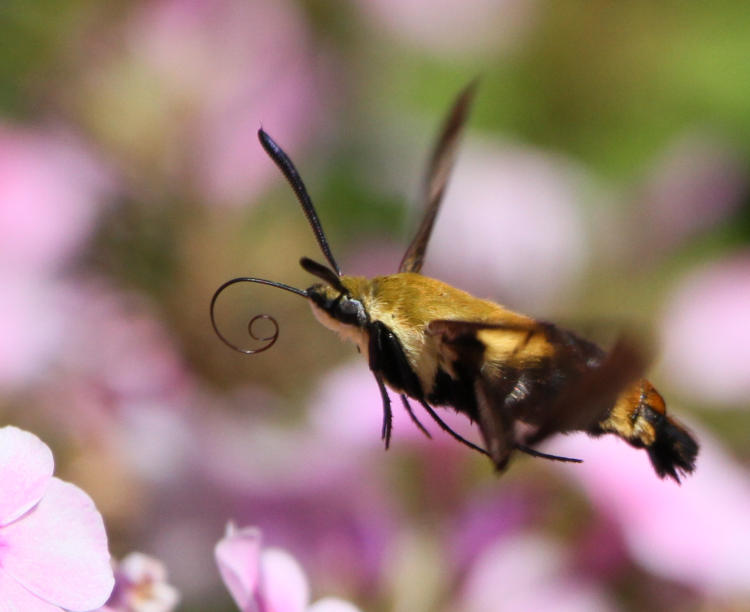
Had to have one more in midair with the proboscis out. So you know, body length is roughly 5-6cm for the species, so captures like this are more luck than skill, but you didn’t hear that from me.
I had another find in the garden, a first I believe, and couldn’t do it justice despite waiting around to see if it reappeared in better conditions.

A very small snake was perched on top of a fenceline, making me stare at it through the camera (this was at 135mm and cropped at that) to first try and confirm that it was a snake, and then, what species. Identification had to wait until I could get back and view the images under more magnification, but I’m calling this a juvenile eastern milk snake (Lampropeltis triangula triangulum,) because right now it’s the only pattern that seems to fit – I’m not sure of any other species that has that speckling along the margins of the belly scales, though most illustrations of the juveniles show brighter patterns and higher contrast than this. I welcome anyone’s input.
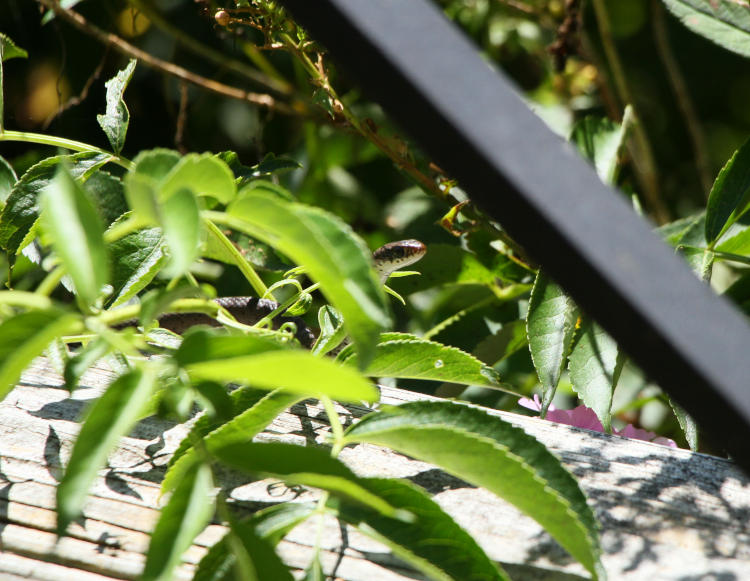
The snake was aware of my presence and efforts to get an unobstructed view, and peeped at me cautiously before slipping from sight into some dense foliage. I waited to see if it would reappear anywhere, but no dice, and between its size and the thickness of the plants, it could easily have been watching me while I couldn’t make it out – its body diameter was maybe 5-7mm, overall length not more than 30cm so, you know, lay a few french fries end-to-end. Still, if it was a milk snake, that makes the second that I’ve seen recently (well separated in distance) after going years without seeing one. Trend or coincidence? Only more careful observations will tell.



















































